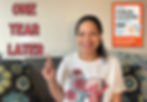Building Thinking Classrooms in Mathematics in Kindergarten: One Year Later
- Lara
- Jun 26, 2023
- 4 min read
Updated: Nov 7, 2023
Well, it's been a year, let me tell you!
I read the Building Thinking Classrooms book last summer (2022) on a whim, and spoiler alert, I found the practice transformational! Teaching students to be problem solvers and be comfortable with not knowing the answer but being willing to try and be resilient is something that I wanted to focus on.
I feel like it's tricky to get most students to participate, usually, some are very motivated, but not the majority by any means!
Let me tell you a little about what I’ve seen and experienced over this last year of implementing Building Thinking Classrooms from the first week of school.
The Results of the Building Thinking Classrooms Framework for One Year
These kids are awesome problem solvers!
I’ve noticed it in all problem-solving contexts, they are so much more confident in their ability to solve problems and jump in with both feet!
Here are some specific examples:
My students have to take a standardized test every year (🤦🏽♀️) there is one specific set of questions that has always stumped the majority of students every year. This year even for students who had trouble meeting the benchmark in other categories, most were able to solve the problems (and I had 46 students!)
In 2020/2021 I created review games for the kids like an Escape Room called the Number Thief and Jeopardy and in the past, they were challenging for 60-80 percent of my students. This year, I was like maybe I should have made these questions harder because they breezed through them!
They moved through above-grade-level content consistently.
I based a lot of my tasks on what the standards were for the topic at hand but they answered the problem so quickly, the thin slicing and check your understanding questions were always above grade level.
Sometimes I wondered if they really understood the concept since they were working in pairs, but they did so well with the check your understanding and individual assessments when I needed to give them so I was ecstatic to see that!
Some interesting things I noticed…
The kids loved working with partners in any capacity.
They didn't ask questions. They know I’m not going to give them an answer, they know I know they can do it so they look for support from their partners or other classmates.
While they loved working with the whiteboard, they also liked doing the check your understanding sitting at a table and not on the whiteboards.
When students who came into Kindergarten with more background knowledge were paired together, they usually were not the best partners, they often made the problem more complicated than it needed to be.
I had two work areas that were not vertical but dry erase, sometimes I would forget to take away the chairs and the difference between their work and the work of the other students that were standing was very noticeable. They would not work as long or as hard as the other students no matter who was there. Needless to say, I made sure to take away the chairs during BTC time!
Things to consider if I started over
I would spend more time modeling how to have conversations for some students who had a more challenging time participating
I would spend more time consolidating, a day or so after the fact. By the end of the Check Your Understanding, they were often ready to be done.
(Interestingly, they hardly ever chose to work on the CYU part at the boards )
I would find a better balance between problem-solving, and practice with skills like number writing, shape names, etc., especially with students who struggled more than others with what we were learning during whole group.
I would emphasize the role of check your understanding questions to them, I didn't have a lot of issues with students participating, but I’m not sure how much they understood that doing these problems was for them to see if they got it and not for me.
Try an Example
I am so convinced that this practice is transformational, I want you to try it too!
Maybe you can’t read the whole book, you really only need the first 3 chapters to get started!
You can download a problem for free by downloading this resource!
In it I’ve included:
One task in a Google Slides Version
Task directions
Thin slicing for the problem
Check your understanding mild, medium, and spicy recording sheets
BTC terms cheat sheet,
Helpful links sheet
A video of me walking you through how I presented the task
Images of student work
BTC Random Partner Color Cards for 2 partners and 3 partners
Hyperlinked Table of Contents
Sharing With Colleagues
About ¾ of the way through the year, I saw the results I was getting and knew I had to share so I asked the 1st grade teacher at my school if she was willing to try Building Thinking Classrooms.
She had been looking for a way to support problem-solving like I was, when I showed her some of the work the kids were producing she was all in!
Most of the students she has now were my students in Kindergarten and I knew they would be perfect for BTC. She was telling me how much they enjoyed it and how many breakthroughs she saw in students who had been struggling, which made my teacher heart so happy!
I would love to chat with you more about BTC anytime if you have questions! Tammy runs the K-2 BTC Facebook group which is also a great place to get ideas and get some questions answered. Send me a message on Instagram or email me at lara@makingnumbersensemakesense.com





